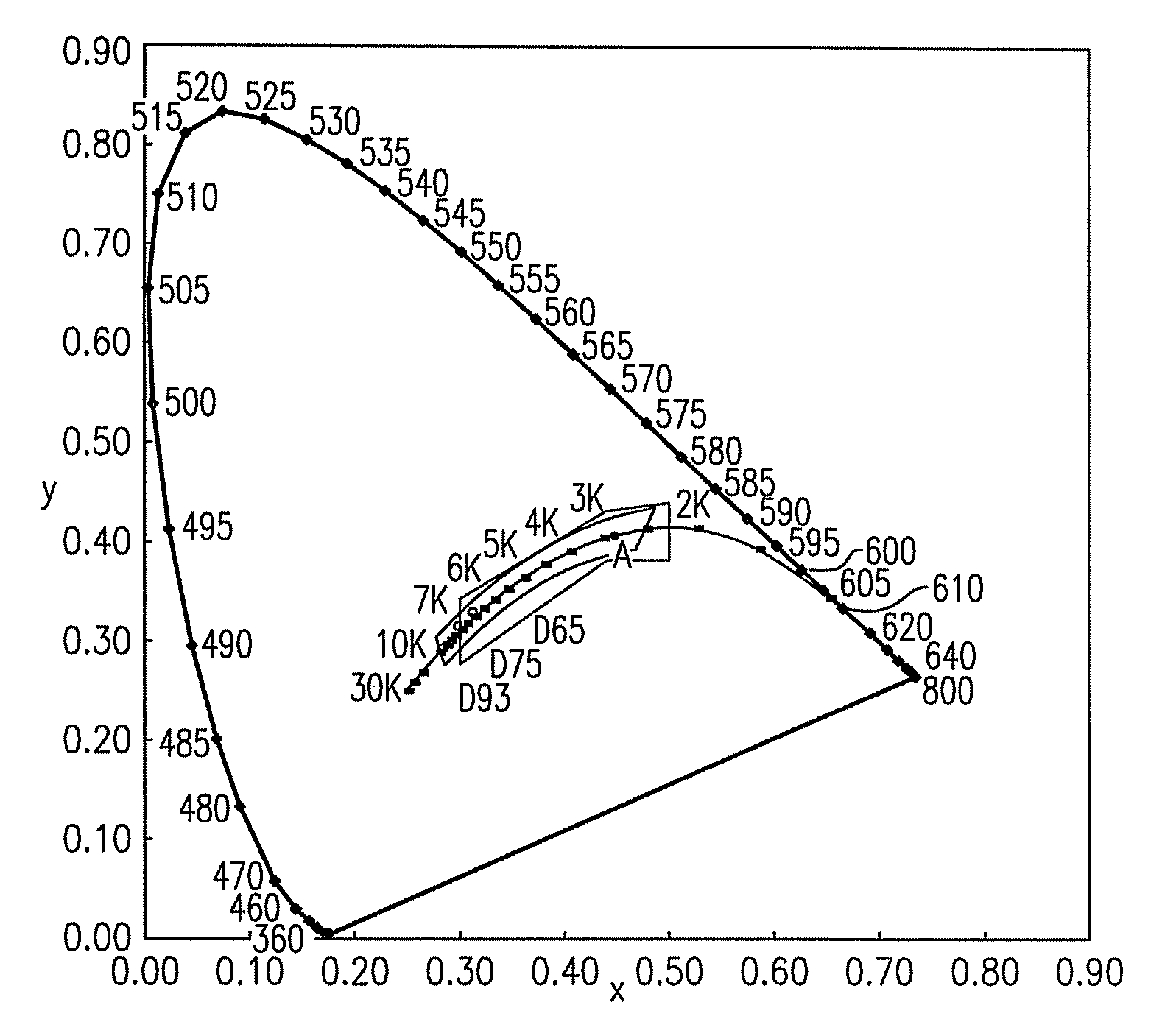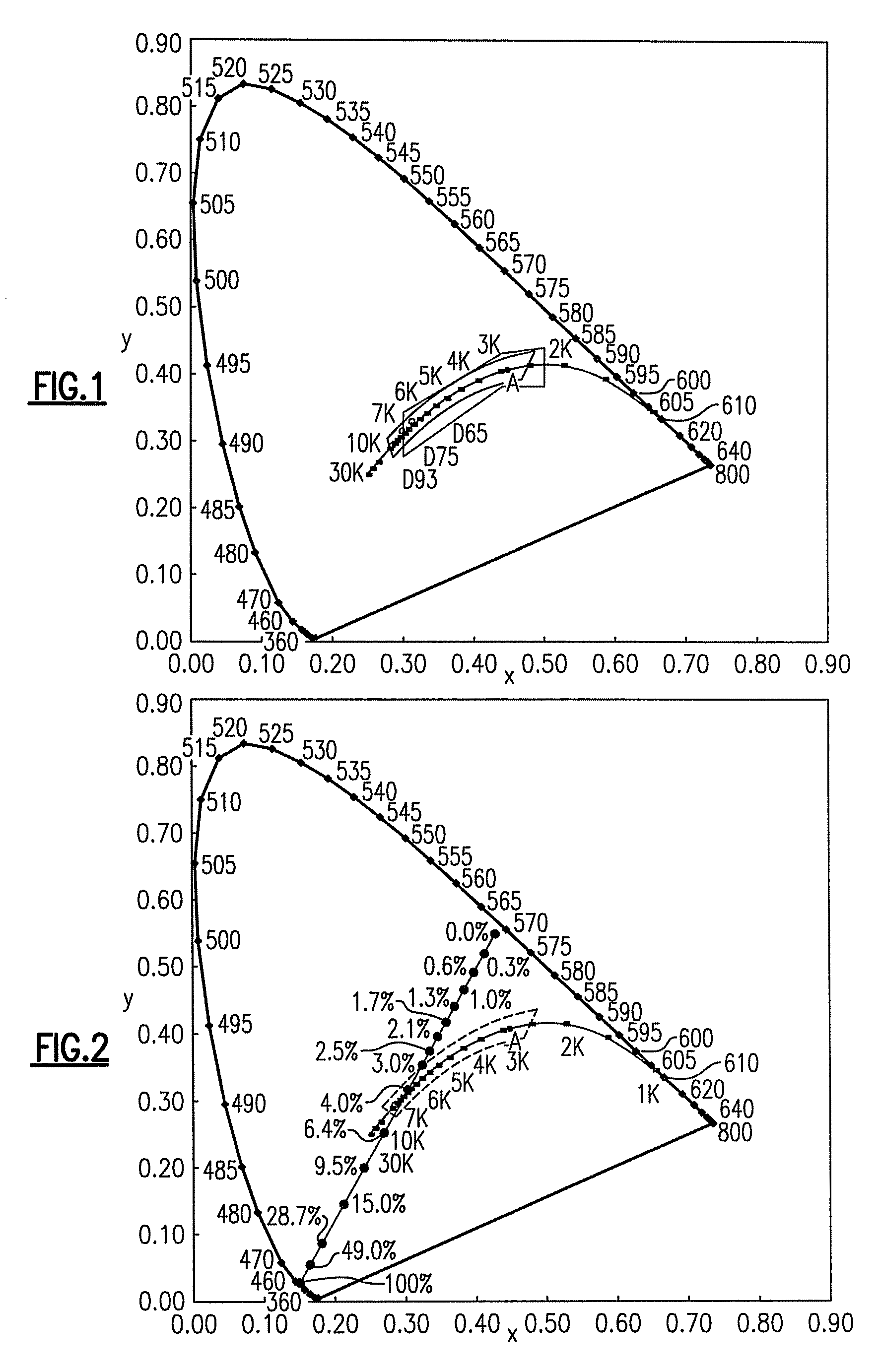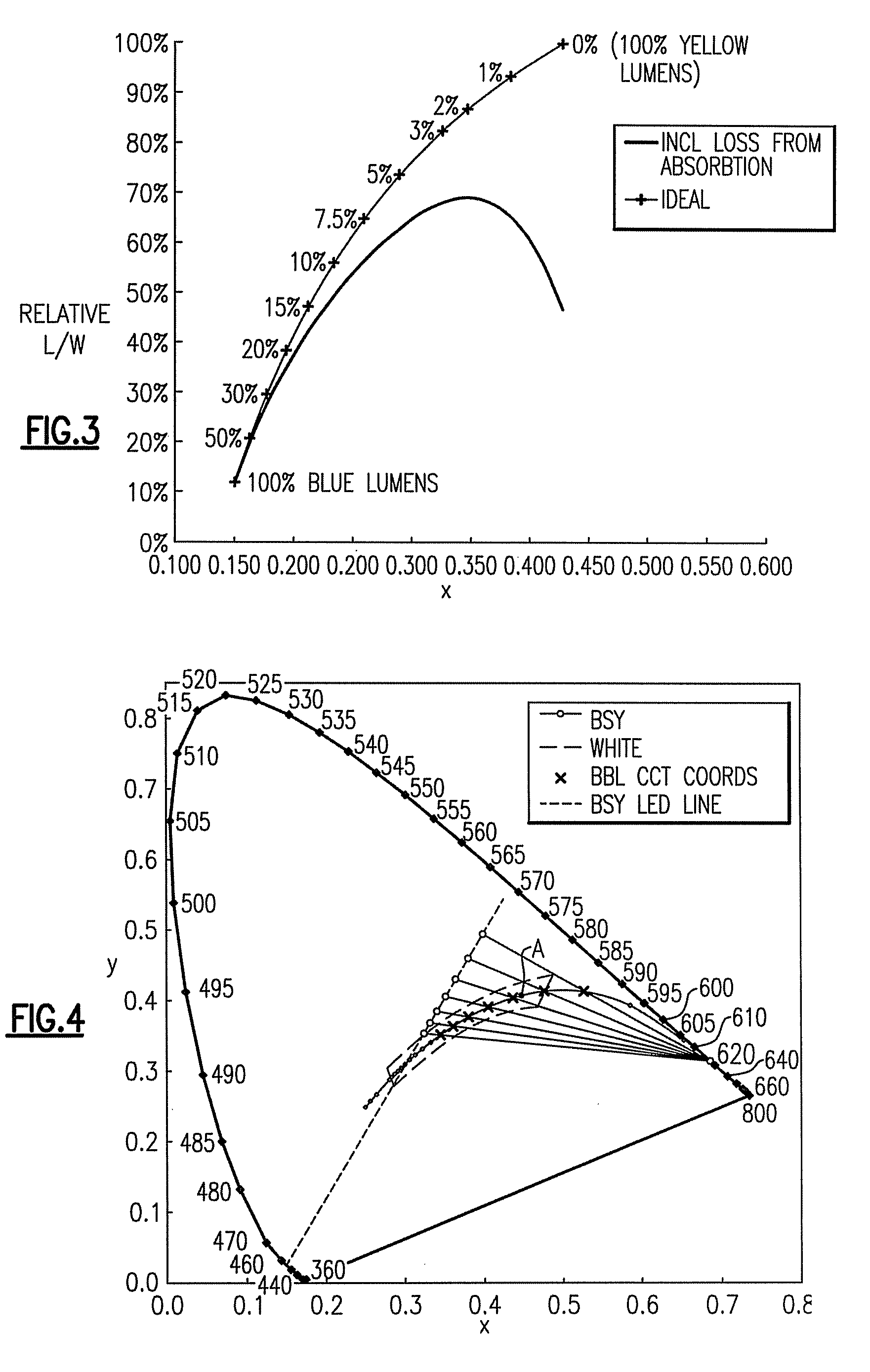Lighting device and method of making
a technology of light source and light source, which is applied in the direction of lighting and heating apparatus, discharge tube luminescnet screens, light source combinations, etc., can solve the problems of low efficacy, low to medium cri ra, and methods with good efficacy but only medium cri or very good cri, and achieve high cri
- Summary
- Abstract
- Description
- Claims
- Application Information
AI Technical Summary
Benefits of technology
Problems solved by technology
Method used
Image
Examples
examples
[0185]Light emitting diodes have been demonstrated to be able to produce white light with efficacy >150 L / W and are anticipated to be the predominant lighting devices within the next decade. LED based luminaires are already commercially available with efficacies up to 60 L / W. Many systems are based primarily on LEDs which combine blue+YAG:Ce or BOSE, or RGB InGaN / AlInGaP LEDs or UV LED excited RGB phosphors. These methods have good efficacy but only medium CRI. They have not been able to demonstrate both high CRI and high efficacy especially with color temperatures between 2700K and 4000K. The general approach described in U.S. Pat. No. 7,213,940 was utilized to produce white light and demonstrate a warm-white luminaire with a wall plug efficacy of 85 lumens per watt, a CRI Ra of 92 at a CCT of 2865K. By combining high efficiency AlInGaP Red LEDs and wide spectrum yellowish phosphor LEDs, high-efficacy high-CRI warm-white illumination was produced.
[0186]A YAG:Ce phosphor was combine...
PUM
 Login to View More
Login to View More Abstract
Description
Claims
Application Information
 Login to View More
Login to View More - R&D
- Intellectual Property
- Life Sciences
- Materials
- Tech Scout
- Unparalleled Data Quality
- Higher Quality Content
- 60% Fewer Hallucinations
Browse by: Latest US Patents, China's latest patents, Technical Efficacy Thesaurus, Application Domain, Technology Topic, Popular Technical Reports.
© 2025 PatSnap. All rights reserved.Legal|Privacy policy|Modern Slavery Act Transparency Statement|Sitemap|About US| Contact US: help@patsnap.com



